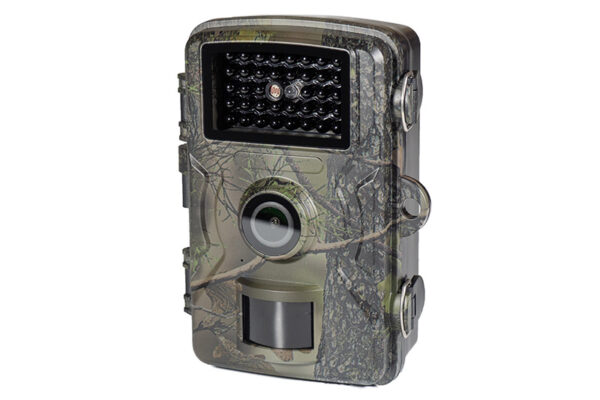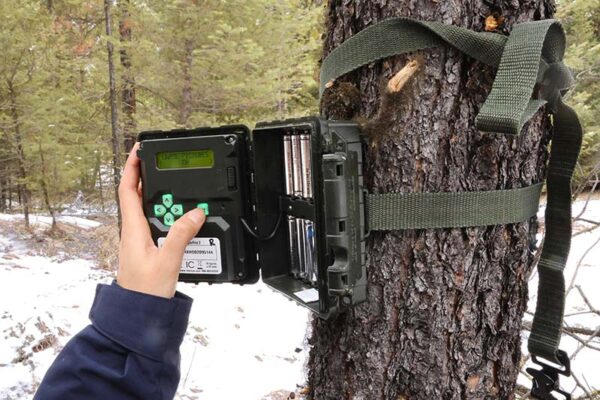Trail Cameras for Security: Beyond the Wilderness
By Greg Oppenheim
October 28, 2025
By Greg Oppenheim
October 28, 2025
Estimated reading time: 4 minutes

Trail cameras are often used to capture candid footage of wildlife in their natural habitat. However, their usefulness extends far beyond observing nature.
These rugged, motion-activated devices are increasingly employed in security and surveillance applications.
They’re especially valuable in scenarios where traditional systems may be impractical or too expensive to install, such as:

Trail cameras use motion sensors to detect movement. When triggered, they capture images or record video. This includes intruders or other suspicious activity.
A trail camera will start to record if a fox approaches a chicken coop or an unauthorized individual wanders onto a construction site. The subject doesn’t need to be directly in front of the lens to trigger the camera. Many cameras have a wide view for recording due to their advanced sensory capabilities.
Developers engineer trail cameras for round-the-clock performance, optimizing them for both day and night surveillance. Their rugged design allows them to perform in harsh environments where traditional cameras might fail.
This makes them ideal for locations that are difficult to secure. Trail cameras used for security are well-suited to monitor rural properties and expansive open areas like parking lots. They can also surveil foot traffic near back entrances and other less-visible access points.
Depending on the security or monitoring application, a trail camera might be preferable to a traditional surveillance camera or vice versa. Each type offers distinct advantages.

Unlike traditional, wired surveillance cameras, trail cameras often run on batteries. Dormant until motion activates them, they are more energy efficient than continuously recording surveillance cameras.
Because trail cameras are small and discreet, they have limited space and can’t support large batteries.
Traditional surveillance cameras usually have higher image and video resolution than trail cameras. Many surveillance cameras provide continuous high-definition video feeds. Trail cameras take bursts of pictures or capture short videos.
Trail cameras are typically less expensive and easier to install than traditional surveillance cameras. Due to the unique design of trail cameras, they can be placed in challenging locations, like a tree or a narrow entry point. They are easily relocated and do not require professional installation or maintenance.
Camouflaged trail cameras blend into natural surroundings. Those with ill intentions will find them difficult to detect. While this helps them stay hidden for covert surveillance, large, easily visible cameras may serve as more effective deterrents.

Multiple technological features and capabilities maximize the effectiveness of trail cameras. Developers should consider incorporating the following into their next design:
Internet of Things (IoT) connectivity enables features like real-time monitoring and alerts. Once motion is detected, the trail camera transmits data to a central monitoring station or cloud storage. The user’s smartphone also receives an alert. This supports quick responses to potential threats.
Damage to or theft of a trail camera that uses only an SD card results in the loss of all stored data. Instead of relying solely on limited local storage, developers should opt for robust cloud storage.
An IoT-enabled trail camera automatically uploads images and videos to the cloud, preventing data loss. By eliminating the need for larger SD cards, cloud storage allows developers to build more compact, discreet devices.
Artificial intelligence (AI) enhances trail camera solutions. AI analyzes the captured image or video data to identify patterns or anomalies, such as repeated trespassing attempts.
Edge AI processes data directly on the camera or nearby hardware. If the trail camera lacks edge AI, the system processes data in the cloud or on a platform. AI is not always embedded in the device itself.
An IoT platform allows users to remotely access and control devices via a desktop or mobile app. This is essential for those monitoring multiple sites across various locations. Remote access and control also help ensure devices in the field stay updated on system software and security protocols.
Trail cameras used in a security application are part of a larger network of sensors and devices. An IoT platform enables seamless integration of trail cameras with broader security systems and connected devices.
Ready to take your trail camera security system to the next level? Telit Cinterion provides the cellular modules, connectivity solutions and platforms you need for reliable, always-on security in remote locations. We build our rugged, power-efficient wireless modules for outdoor use, ensuring optimal performance for your security and surveillance cameras.
Request a consultation today and discover how we can help you bring your trail camera project to market securely and at scale.